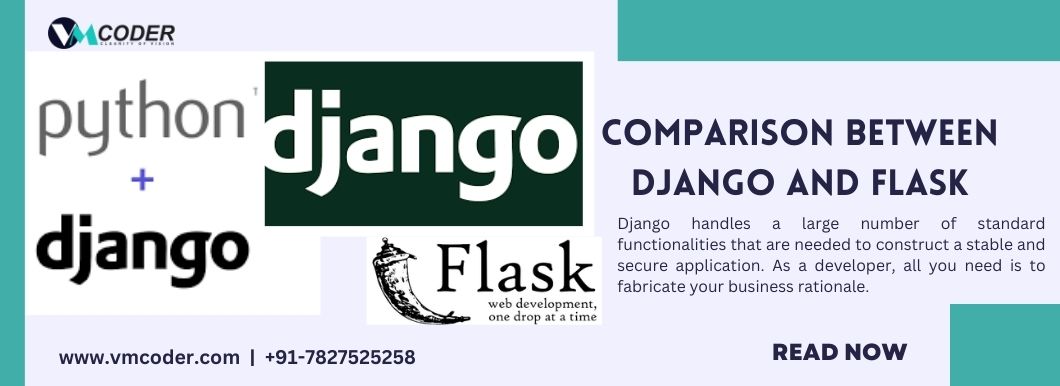Comparison Between Django and Flask
Django handles a large number of standard functionalities that are needed to construct a stable and secure application. As a developer, all you need is to fabricate your business rationale. Django is free and open-source and has exceptionally dynamic and accommodating local area support with heaps of documentation. The name Django authoritatively appeared in July 2005. With Django, you get a large portion of the things ‘out-of-the-case’ as one single item. Along these lines, there are no incorporation issues also. On the other hand, Flask is a lightweight system famously classified as a micro framework. Flask accompanies some standard functionalities and permits developers to add quite a few libraries or modules for an expansion. In the event that you have a basic, inventive use case to be added to a current application, Flask ought to be your decision as it offers adaptability. Flask accompanies a little arrangement of simple-to-learn API, and the documentation is superb. In case you are new to Python, start your web advancement with Flask, so you can get the vibe of backend and frontend both just as getting familiar with the core concepts well.
to get a better understanding let’s discuss some features of Django and Flask
A few features of Django are –
- This framework manages a variety of standard security features including user management, transaction management, cross-site request forgery, clickjacking, etc.
- The system is scalable and maintainable. Using design patterns and principles, Django reuses and maintains code. Each layer in Django is independently scalable since it is a component-based framework.
- Django is convenient. It is written in Python, at present, the most famous programming language that can run anyplace.
A few features of Flask are–
- It allows you (developer) to make all the decisions regarding the application’s development (implementation).
- Includes a built-in development server and a fast debugger
- Flexible configuration
- Werkzeug and Jinja2 are the two most important dependencies for Flask.
Django versus Flask: Head-to-Head Comparison
Indeed, you ought to have the hang of it at this point – while Django is an undeniable structure with heaps of functionalities previously accomplished for you, Flask leaves everything under your influence. However, this isn’t the solitary contrast; a few contrasts assist you with understanding which one you should pick for your web application.
Here you go to get the distinction between Flask versus Django–
|
Django |
Flask |
|
Full-stack web system that follows the batteries-included approach. |
Light-weight structure with moderate provisions. |
|
Developers as of now approach the most well-known elements that create improvement faster. |
Developers can investigate and keep control of the core of the application. |
|
Django accompanies a ready-to-use admin framework that can be customized. |
Flask doesn’t have any such component to deal with administration tasks. |
|
It accompanies a built-in admin template engine that saves a ton of advancement time. |
Flask’s template engine Jinja2 depends on Django’s template engine. |
One common question among developers is which framework is best.
You should have a good idea by now of how each framework works and the best way to use it. However, Flask-built websites can be as successful and perform as well as Django-built sites. Django and Flask accomplish quite a few of the same tasks, but Django is more robust and vaster and requires a much deeper learning curve. For more sophisticated web applications, start with Flask, then move to Django. Alternatively, you can master one skill and switch when your job requires it, rather than learning everything at once. Flask lets you write basic programs right away, while Django requires some preparation before you can write a Hello World program. With an expanding project structure, adding new features becomes harder with Flask, while Django would seem like a breeze.
Written by :
Shweta Bhatia
Leave a Reply
Your email address will not be published. Required fields are marked *






